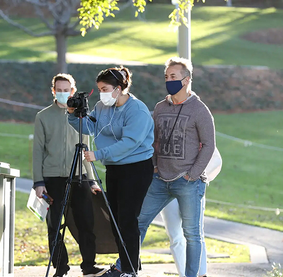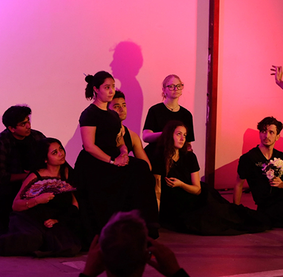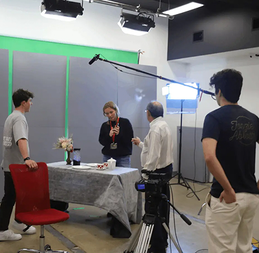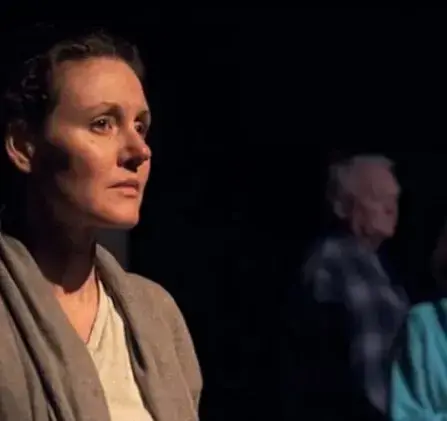Our Courses
Upcoming Workshops


Musical Theatre Audition Workshop
This workshop will equip high school students with essential acting, singing, and movement skills.


Film Ideation to Creation Workshop
Transform your creative vision into reality with this hands-on storytelling and filmmaking workshop.


Introduction to Photography (Beginners)
Discover the art of photography and learn to capture stunning visuals in this beginner-friendly workshop.


6-Week Intermediate Acting Course
Attain perfection in acting with this APAC workshop to learn expert tips from professionals.


Introduction to Advanced Editing
Take your editing skills to the next level in this expert-led workshop tailored for those who already know their way around the edit timeline.


School Holiday Film Creation or Acting Workshop
Master the craft of acting in this 3-day workshop to take your acting dream to the next level.


Introduction to Editing (DaVinci Resolve)
Discover the power of post-production in this hands-on editing workshop using DaVinci Resolve, the industry-leading editing software.


DaVinci Resolve Editing Basics – Essential Skills for Screen & Media Teachers
A short-format professional development session for Queensland secondary teachers (Years 9–12, including VET Certificate II/III), equipping them with hands-on skills in DaVinci Resolve v20—covering cutting, trimming, sound, color, exporting, and the latest AI-powered tools.
Upcoming Workshops
Our Campus
Situated in the heart of Brisbane’s CBD, APAC has the city at its fingertips.
Welcome to the APAC campus, situated in the heart of Brisbane’s CBD. It is a dynamic hub of creativity and opportunity for your artistic journey.
With film studios, performance spaces, an editing suite, and rehearsal rooms, join us to discover your limitless creative potential today.
Our Faculty

Director of Higher Education
Avril Huddy
Avril is an award-winning lecturer and teaching artist. She was an academic leader of the dance specialisation within the Bachelor of Fine Arts at the Queensland University of Technology (QUT) for 14 years, and has previously worked with APAC as an expert critical friend on new degree development.
Avril has a Master of Arts (Research), from QUT and is currently completing her PhD. Her Masters thesis is titled “A Contemporary Model for Dance Artists in Residence in Secondary Schools”. Avril also holds Pilates instructor qualifications and Feldenkrais Method practitioner qualifications.

Head of Discipline – Acting
Sean Dennehy
“Give yourselves the permission to be excellent” A passionate acting teacher Sean teaches from the film set to the classroom, from the stage to the studio straight to the students of APAC. An independent actor, director and producer he has travelled his way round the world and through the industry. His credits include:
Appearing in TV Rake, Home and Away, All Saints films Don’t Tell, Sanctum 3D, his latest film JIVA is showing at Cannes Film Festival in 2020. Theatre As You Like It, Mercy Thieves, Rigoletto, and Hamlet.
QLD Executive Producer of the Short+Sweet Theatre + Cabaret Festival, Sean provides a professional pathway into the industry. Director and producer for OperaWorks LA, Taiwan International Arts Festival, Regional Theatres such as the Brolga and independently in Australia and U.S.A.
Course coordinator – for the past 3 years he has been helping artists realise their passion by turning their talent into a career.

Program Support
Dr Jo Loth
Jo is an educator, performance-maker and Designated Linklater Voice Teacher. She has taught voice, movement and acting in tertiary settings for over 25 years and specialises in Linklater voice and the Suzuki actor training method
Performance highlights include Tadashi Suzuki’s Theatre Festivals in Japan, The Edinburgh Fringe Festival, The Brisbane Festival and The Brisbane Cabaret Festival. She recently performed in and produced the comic cabaret. DragSpeare: Drag Kings do Shakespeare at Metro Arts. Jo began her career training and performing with Brisbane company Oz Frank and has since trained with Kristin Linklater, The Suzuki Company of Toga, Shakespeare and Company, Pantheatre (France), Shakespeare and Company and P3/East (Seattle). She is a recipient of the Brisbane Lord Mayor's Performing Arts Fellowship.
Jo is passionate about combining Linklater voice and the Suzuki actor training method and has published articles on the topic in Internationally recognised actor training journals.

Lecturer – Screen Acting
Mirko Grillini
Born and raised in Italy, Mirko graduated in performing arts early 2000s. With a background as a Chef Presenter, he devotes his life to performance on both screen and stage as actor, accomplishing to date over 200 screen productions and hundreds of live performances. Roles include Narnia, The Leftovers, Home and Away, Wanted, Neighbours, Joe Exotic and a array of international & Domestic Feature Films. Mirko has won several awards as an actor and as a director/writer and run classes in QLD, NSW and VIC as mentorship for artists who wanted to deepen their understanding of truthful performance and business growth in the industry.
His goal is to allow each student to unleash the artist inside, make it boundaryless and curious and find the freedom to learn, reflect and create while maintaining a vision and be abreast of the constant evolution of the Film/Tv industry. Understanding the business allows the artist to be like water and filter through the gaps constricting creativity and successful outcomes.

Lecturer – Screen Production
Joe Nucifora
Joe’s extensive Film and TV career – as a photographer, cinematographer, editor, producer, and teacher – commenced in the late 70’s in special events, as well state-wide TV commercials, documentaries, corporate, marketing, entertainment and instructional videos. In the late 90’s Joe established his own successful professional photography business, specialising in portraiture, fashion, commercial and advertising – as well as video editing and film production.
Over the span of his career he has also worked alongside Brisbane based cinematographers producing work for a wide range of advertising agencies, as well as significant large-scale Queensland government projects.
Joe brings extensive technical and creative skills and experience to APAC, as well as formal qualifications in a GradCert in Tertiary & Adult Education, excellent communication skills and complete professionalism. All of direct benefit to the students he teaches and the professional colleagues with whom he works on a day-to-day basis.

Lecturer – Acting
Sherri Smith
Sherri has had an extensive movement background and has furthered her training in acting and fight combat disciplines. This has allowed her to work in many areas through the performance industry including stage, screen, and live interactive theatre productions. Her credits include solo-actor performances of the stage play adaptation of ‘Animal Farm’ performed at the Powerhouse, Sonia in Uncle Vanya (The Curators Theatre); Lady Capulet in Shakespeare’s ‘Romeo & Juliet’ in the Shakespeare Festival, and MJ in ‘Mania’ as part of the Brisbane Arts Festival. In addition to her stage roles, she her work has also included: TVC’s, voice-over work, and roles in International, National and Local film projects like Project Eden (Mad Anth’m Pictures), Practise Patience (Sparrowland Productions) and Phoenix Rising (Vertical Realm Productions). Whilst lecturing at APAC, she still continues to work professionally in the industry.

Director and Co-Founder of The Madeleines,
Shannon
Shannon has been performing professionally in musical theatre for over a decade and holds a Master’s Degree in Music Theatre (Distinction) from the Royal Central School of Speech and Drama in London. She is the Director and Co-Founder of The Madeleines, a professional vocal trio, where she has performed extensively worldwide and overseen all creative direction and production. Further credits include performing as a lead vocalist roles at Hong Kong Disneyland (where she played Ariel and Merida), UK touring productions, lead vocalist roles on major cruise lines, international theatre productions, and screen appearances including Shortland Street and the Netflix series East of Eden.
She has also co-written and produced several original cabarets, which have been performed as headline shows on major cruise lines and as part of national theatre festivals. Alongside her performance career, Shannon is a dedicated vocal coach and director, known for her warm and encouraging teaching style. As Head of Department for Musical Theatre at APAC, she is passionate about developing confident, creative, and resilient performers equipped for sustainable careers in the musical theatre industry.

 Instagram
Instagram
 YouTube
YouTube
 Facebook
Facebook
 Linked In
Linked In
 TikTok
TikTok
 Enquire Now
Enquire Now










































